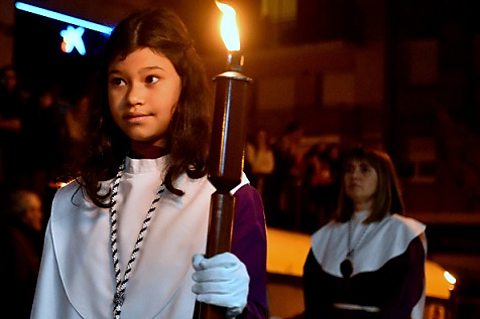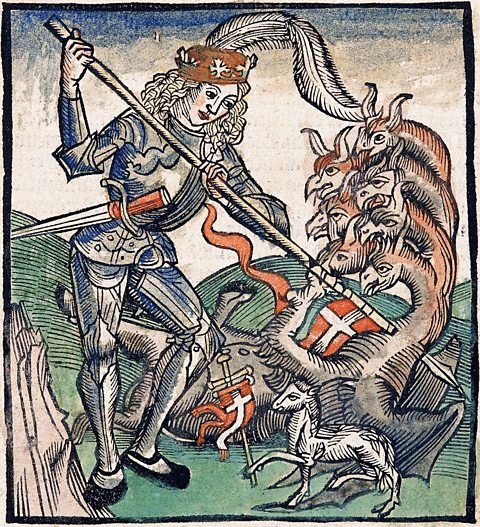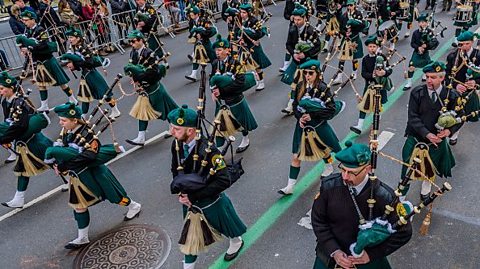When it comes to bank holidays, the month of May is where it's at. May contains two bank holidays for all four nations of the UK. The first is known as the Early May bank holiday or May Day, and takes place on 6 May 2024. The second is the Spring bank holiday, on 27 May 2024.
In the UK, we’ve had official bank holidays since 1871, when they were formally recognised by an Act of Parliament. On these days, banks were allowed to close, which is where the name comes from. It wasn’t long, however, before other types of businesses and schools began to close their doors as well.
While the four nations of the UK share some bank holidays, Scotland and Northern Ireland have a couple of different ones to England and Wales.
It’s not just the UK that has public holidays though. In fact, the UK actually has one of the lowest numbers of public holidays in the world, with eight. Only Mexico has fewer with seven.
It’s up to each country to decide how many bank holidays they want, and when they should be. In some cases, different regions within a country would have their own holidays. This year, the UK had an additional bank holiday to celebrate King Charles III's coronation.
But why are certain days chosen over others?
Getting back to our farming roots
In the UK, people have been celebrating specific holidays for hundreds of years, long before the government made them official in 1871. Some of these holidays were closely tied to agriculture and rural life.
The most famous example is the first May bank holiday, commonly known as May Day. It’s the one traditionally associated with people dancing with ribbons around a Maypole on a village green and crowning a young girl as a May Queen.
May Day normally takes place on the first Monday in May.
 Image source, ґуПуґ«ГЅ
Image source, ґуПуґ«ГЅWe spoke to Professor Julie-Marie Strange, a historian at Durham University, who explained how farming gave us this bank holiday.
She explains: “May Day in Britain springs from much older seasonal customs associated with the agricultural economy.”
There is strong evidence that in Ireland and Scotland, there was a custom known as Beltane. Fires were lit on May Eve or May Day in order to protect cattle being moved to the fields from their winter shelters.
“The fires were to intimidate the various spirits, demons, goblins or fairies … that might threaten cattle health, or, rather, meat and milk!.”
May has always been one of the busiest times of years for farmers. With months of exhausting work ahead of them, May Day gave rural families a chance to relax and celebrate, whilst also hoping for good fortune for their crops.
These days, bank holidays offer a chance to gather together and have fun. Prof Strange argues that “this is not too much of a break from the past”. May Day was a chance to “overturn social conventions and break the rules, even if only for a day.”
Despite the arrival of the Industrial Revolution in the 19th Century, May Day survived. Factory conditions were so appalling that workers insisted on being allowed to take a break to celebrate their old rural traditions.
A chance to observe important religious festivals
It’s no coincidence that, right across the world, many public holidays align with religious festivals, allowing believers to fulfil their religious duties on those special days. The popularity of a particular religion will typically decide which religious festivals are celebrated as public holidays.
Spain has the highest number of public holidays of any European country, with up to 14 each year. The vast majority of these are linked to the Catholic calendar, for example the Assumption of Mary and All Saints’ Day.
 Image source, SOPA Images
Image source, SOPA ImagesIt’s a similar story in Colombia, which has 18 public holidays a year, one of the highest in the world. The majority of these are linked to Catholicism.
Lebanon has large Muslim and Christian populations, which is reflected in its choice of public holidays. For example, both Christmas Day and Eid Al-Fitr (end of Ramadan) are celebrated in this way.
In the UK, many of our parish churches are named after particular saints, who each have their own festival day in the Catholic church calendar. Before the Protestant Reformation of the 16th Century, local saint’s days were widely celebrated.
Bernard Capp, emeritus professor of History at the University of Warwick, outlines how parishioners celebrated:
“On that day there would be a local celebration, often called a parish wake. The church would be decorated, and there would be drinking and merrymaking. Often there was dancing too, and money was collected to relieve the local poor or fund church repairs.”
Sometimes, the celebrations weren’t confined to just one village. Visitors would come from the surrounding area to join in.
“Usually these were good humoured occasions. Sometimes, perhaps inevitably, they descended into drunken brawls.”

Patron saints' days
Within the UK, patron saints' days are celebrated slightly differently by the four nations.
Both Scotland and Northern Ireland have bank holidays for the feast days of their patron saints, St Andrews’ Day and St Patrick’s day respectively.
Unusually, neither England or Wales do the same. Whilst individuals and communities may choose to celebrate St George's Day and St David's Day in other ways, they aren't bank holidays. This was not always the case, however.
Prof Capp explains that “there were medieval processions in many cities, with elaborate effigies of St George and the dragon.”
“The Protestant reformers of the 16th Century didn't approve of saints so at Norwich they got rid of St George - but kept the dragon!”

Crafting a national identity
In the US, the separation of Church and State means that fewer public holidays have explicitly religious origins.
Instead, Matthew Dennis, professor emeritus of history and environmental studies at the University of Oregon, argues that the US’s public holidays were chosen to “forge a new, common national identity after it severed the one thing that bound them together as colonies -proud membership in the British Empire.”
For example, in his book “Red, White, and Blue Letter Days: An American Calendar”, Prof Dennis describes how Independence Day and George Washington’s Birthday (now celebrated on President’s Day) “symbolised the birth of a new people and polity”. They helped to nurture a sense of union and nationalism in the early years of the United States, following the disruption of the War of Independence.
For Prof Dennis, these holidays “remain public arenas in which American identity, principles, promise, policy, and history might be debated.”
Five things you never knew about St George
He's England's patron saint but his history could surprise you.

How is Eid al-Fitr celebrated around the world?
Eid is a time of celebration for millions of people, all with their own traditions.

Why is St Patrick's Day so popular in America?
The patron saint of Ireland's popularity in the USA and across the globe.
